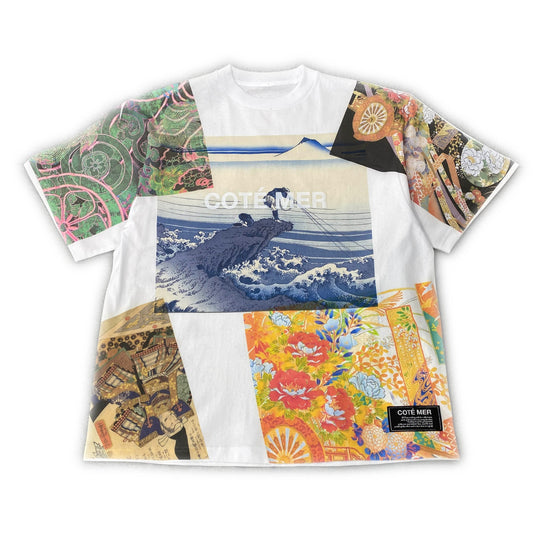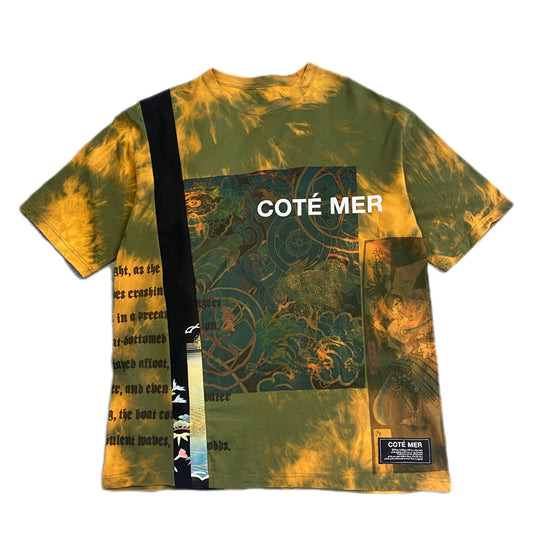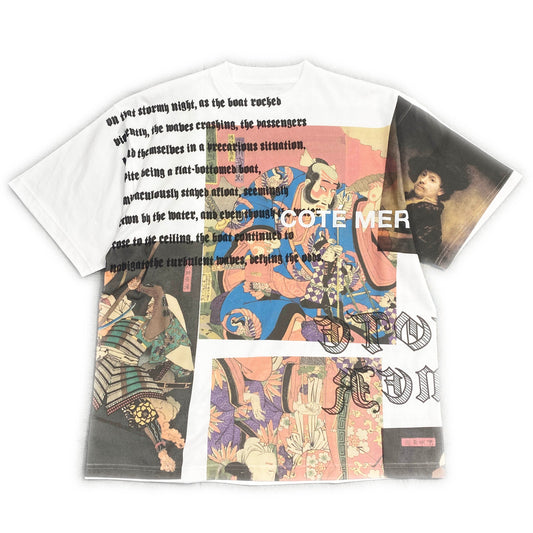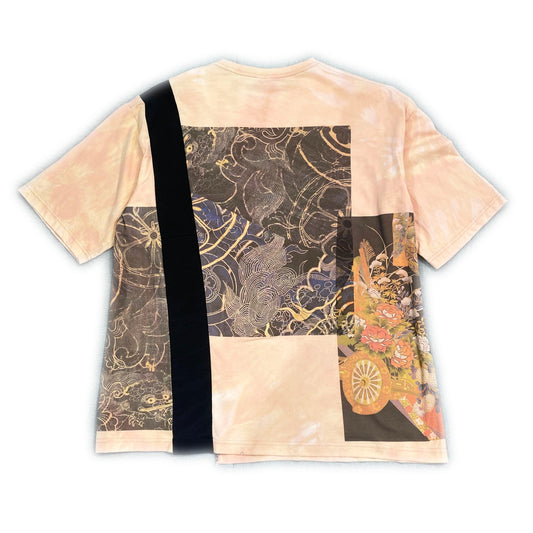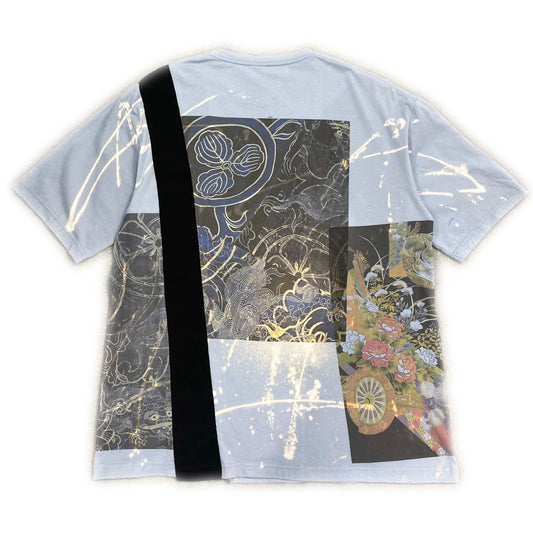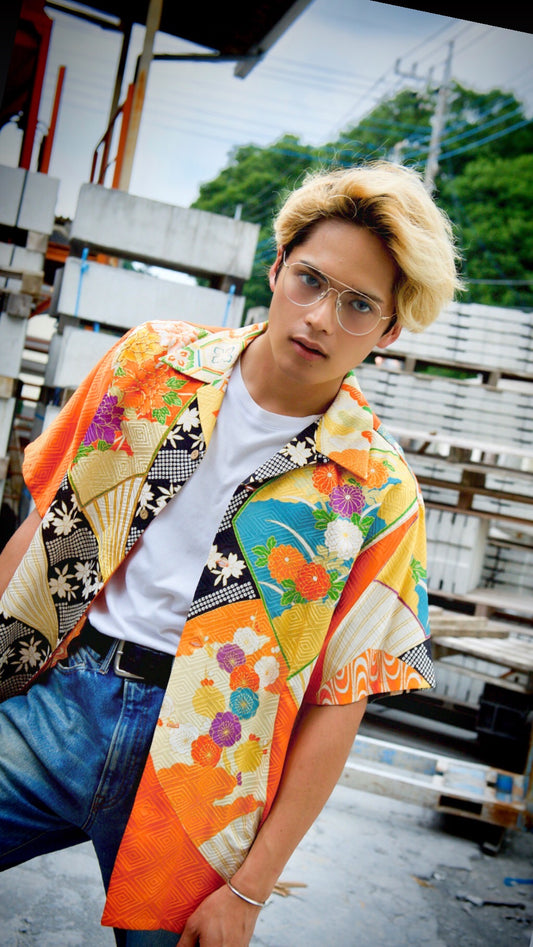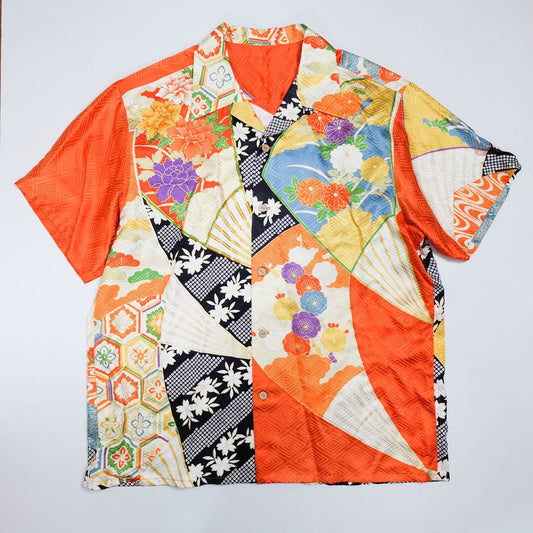Kategorie: Aloha & Wagara Kimono Remake Garments · Reimagined Japanese Textiles
Aloha & Wagara Kimono Remake — Japanese Textiles, Reimagined
A refined fusion of Japanese wagara textiles and relaxed Aloha silhouettes—creating modern garments from the soul of traditional kimono fabrics.
The Aloha & Wagara Kimono Remake Collection showcases garments crafted from vintage kimono textiles, yukata cottons, and handwoven fabrics. These pieces reinterpret tradition through contemporary tailoring, transforming historic materials into expressive, wearable art.
Whether made from silk kimono, indigo kasuri, wagara-patterned jacquard, or hanhaba obi fabrics, each garment honors the past while embracing a modern sensibility.
Within this archive, you may find:
- Aloha shirts crafted from vintage kimono fabrics
- Patchwork kimono jackets and haori remakes
- Wagara-patterned tops with modern silhouettes
- Kasuri, katazome, and shibori textile garments
- One-of-a-kind upcycled kimono creations
These garments carry the intimacy of history—the softness of aged textiles, the depth of hand-dyed patterns, and the emotional resonance of materials once worn for celebration or ritual.
Curated by Japonista, this collection honors Japanese textile heritage through thoughtful modern reinterpretation.
Looking for a specific textile or pattern?
For rare kimono fabrics, heirloom textiles, or custom garment sourcing, our Concierge & Cultural Sourcing Service can help locate exceptional textiles from across Japan.
-
Bespoke Hypebeast Japanese Vintage Wagara Ukiyoe Samurai Kabuki Geisha Sharaku Hokusai Wave Style Handmade Graphic Custom COTE MER Upcycle Sustainable Street Fashion Kimono Obi Boro Design Remake Tops Print T Tee Shirt ( Size : L )
Normaler Preis $354.55 USDNormaler Preis -
Bespoke Hypebeast Japanese Vintage Wagara Ukiyoe Samurai Kabuki Style Handmade Graphic Custom COTE MER Upcycle Sustainable Street Fashion Kimono Obi Boro Design Remake Tops Print T Tee Shirt ( Size : L )
Normaler Preis $350.00 USDNormaler Preis -
Bespoke Hypebeast Japanese Vintage Wagara Ukiyoe Samurai Kabuki Style Handmade Graphic Custom COTE MER Upcycle Sustainable Street Fashion Kimono Obi Boro Design Remake Tops Print T Tee Shirt ( Size : L )
Normaler Preis $350.00 USDNormaler Preis -
Bespoke Shibui Japanese Vintage Style Handmade Wagara Kimono Remake Custom COTE MER Upcycle Sustainable Street Fashion Obi Boro Design Inspired Paisley BASEBALL Tops Shirt ( Size : XL )
Normaler Preis $980.00 USDNormaler Preis -
Bespoke Hypebeast Japanese Vintage Style Handmade Graphic Custom COTE MER Upcycle Sustainable Street Fashion Kimono Obi Boro Design Print Remake Tops Tee T Shirt ( Size : L )
Normaler Preis $430.00 USDNormaler Preis -
Bespoke Hypebeast Japanese Vintage Style Handmade Graphic Custom COTE MER Upcycle Sustainable Street Fashion Kimono Obi Boro Design Remake Tops T Tee Shirt ( Size : XL )
Normaler Preis $350.00 USDNormaler Preis -
Japanese Vintage Kimono Remake Deconstructed Sustainable Premium Designer Aloha Wagara Hawaiian Silk Shirt ( Size : L - XL )
Normaler Preis $450.00 USDNormaler Preis -
Handmade Made in Japan Art Japanese Floral Flower Hana Orange Kamon Hawaiian Aloha Wagara Button Down Polo Shirt Vintage Kimono Remake Shirt
Normaler Preis $450.00 USDNormaler Preis$545.45 USDVerkaufspreis $450.00 USDSale

